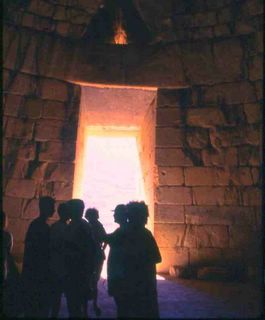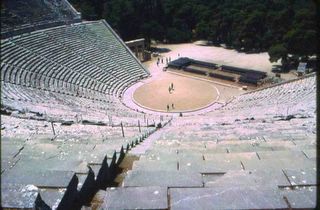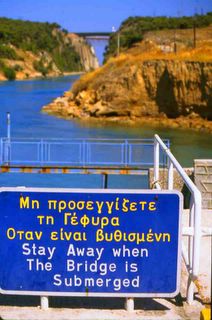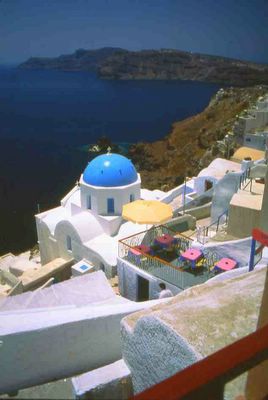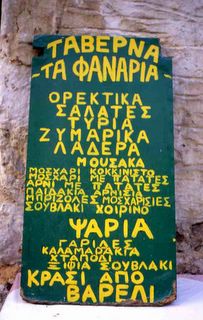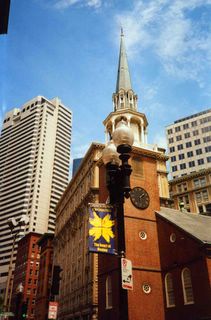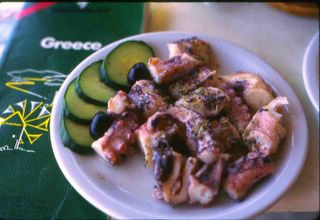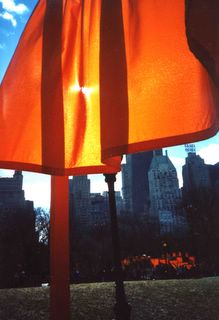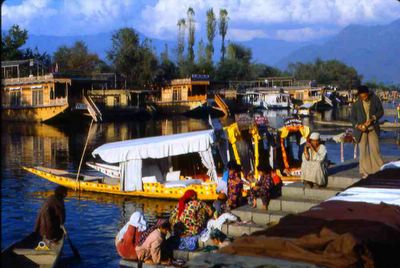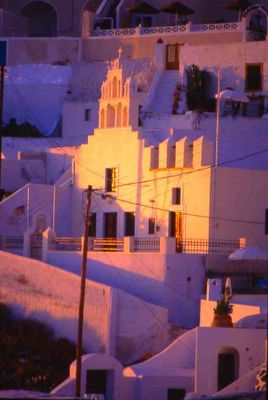
(To blog readers: This is the last of 10 posts about places my son will soon visit on a trip to Greece with Oliver Ames (OA) High School in Massachusetts. I hope you've enjoyed the stories, photos and links as much as I've enjoyed sharing them. The kids are taking off soon, and they're getting excited. Their parents are, well ... let's just say that "excited" doesn't quite cover it... A few of Adam's buddies are going on the trip, which is good. It might keep him from focusing too much on all the young ladies in the group. The ratio is 10 boys to 50 girls. Adam continues to prove how sharp he is. There are no flies on this kid (although he claims he didn't know the gender balance of the group when he signed up...). Anyway, I've advised him to stick with Niko, a senior who's spent summers since the age of two at his family's home on Crete, speaks fluent Greek, and knows that real men do, indeed, wear money belts. Which leads me to muse that I'm glad I'm the parent of a boy who wears big shorts and long t-shirts, the better to hide the money belt under. Sixteen-year-old girls wear jeans on their hips and tiny shirts that hover around the navel. Where will they hide their money belts? I'm glad I'm not one of the 50 mothers pondering this right now. Well, Godspeed, OA Argonauts. Make good decisions and excellent memories.)
Twenty islands, including the volcanic wonder that is Santorini, form the Cyclades, an Aegean archipelago named for the circle (kyklos) that the original 12 Cycladic islands formed around sacred Delos, birthplace of Apollo.
Today, the Cyclades, expanded to include islands not in the original dozen, are on most travelers’ must-see lists. The Cyclades burst with antiquities, ruins, ancient gods and myths (and beaches, tavernas, inter-island ferries, markets and shops, glorious food and drink, and excellent people-watching), but the sun and the magic that it creates are the main event.
Santorini has more than its fair share of Cycladic sunshine. The island is so blessed with sunlight that even the rocky interior plain that slopes eastward away from the island’s dramatic volcanic cliffs produces lush tomatoes and rich wine grapes.
I know they'll stay up late, but I hope the OA kids get up early on Santorini, because the play of light during the bookends of a Santorini day is one of God’s great gifts. Santorini is at its most splendid early and late, when sunrise and sunset turn the island’s signature cuboid houses and churches into white canvases that invite and absorb whatever colors nature decides to splash. On Santorini, dawn and dusk are not just times of day, but dramatic performances. Pull up a seat and enjoy one of the greatest shows on earth.
Go to Santorini -- and Greece -- for the light alone.
Comments or questions? Email me.
www.LoriHein.com

